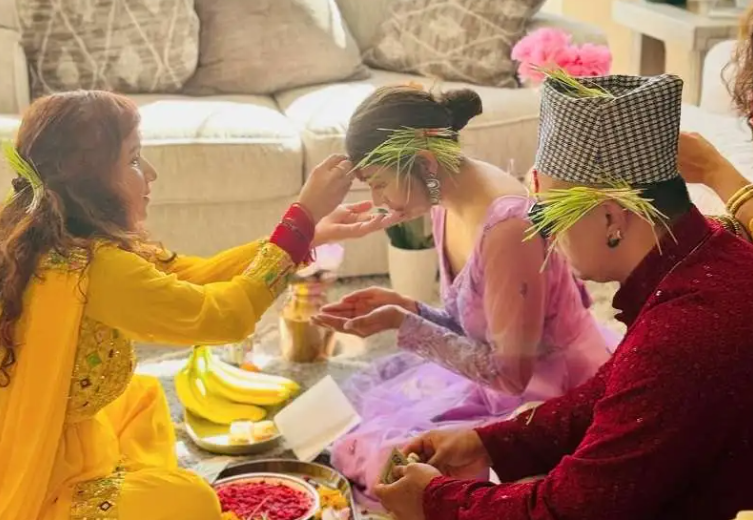
The largest and most significant festival in Nepal is Dashain festival, also known as the Vijaya Dashami, is celebrated by Hindus throughout the country and by the Nepali diaspora around the globe. The 15-day festival lasts from late September to mid October, and is an occasion for the triumph of the goddess Durga over the demon Mahishasura, a celebration of good triumphing over evil. In addition to being a time of religious observance, it is a season for family reunion, cultural and social celebration.
It is Dashain which celebrates Goddess Durga’s victory over the demon Mahishasura, a symbol of good defeat bad. In ancient texts the demon Mahishasura had become powerful and powerful, scaring away the gods. To this, Goddess Durga, a strong incarnation of Shakti was born as a force to kill him.
This nine day fierce battle concluded with Durga’s victory on the tenth day, called Vijaya Dashami. Victory of Goddess Durga represents the never ending battle between evil and good, darkness and light. It teaches us that the more evil becomes, the more righteous it will remain.
You should also be able to trace the festival to the epic Ramayana, in which Lord Ram defeats the demon King Ravana. The duality of these narratives across Durga’s battle of Mahishasura and Ram’s fight against Ravana illustrates the common theme of the righteousness over evil.
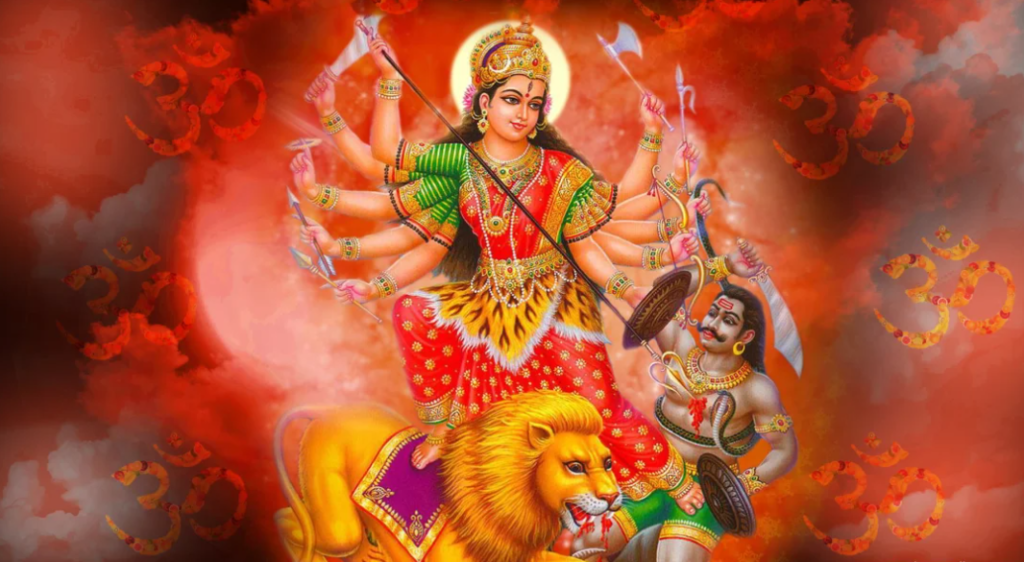
How is Dashain Celebrated in Nepal?
The preparations for Dashain begin several weeks before the actual festival. A time of excitement as households do all they can to keep things at a running pace and make out just right as they prepare for all the grand celebrations. Cleaning, decorating, shopping and planning family parties for the holidays are most often the starts of preparations.
House Cleaning and Decorating
Clearing and deocrating the house is one of the first steps in Dashain. Nepali families believe the goddess Durga will visit houses that are clean and pure, and so houses are scrubbed from top to bottom. Furthermore, it is also symbolic in welcoming new energy, prosperity, blessings, to the home.
Some homes get decorated during Dashain with traditional items like flowers, leaves, and vibrant fabrics. People also hang garlands from marigold flowers, in Hindu culture it is seen as holy flower. Some households also prepared a sacred space called puja room where religious rituals will be performed during the festival.
Buying New Clothes and Gifts
Time is celebratory and renewal, and buying new clothes is an important part of Dashain. New clothes stand for new beginnings, for everyone, from children to the elderly, they buy new sets of clothes for the occasion. One of the best things about Dashain for children is getting to display their new clothes to friends and relatives.
People also buy other types of gifts for their family members. The gifts in these include from sweets and fruits to more valuable things exchanged during the family gatherings as token of love and appreciate.
Family Reunions
Family gatherings are primarily what Dashain is about. The festival itself is also a time when people who have migrated for work or education can return home to reconnect with their loved ones. During the auspicious time, the atmosphere is wonderful as people get joy that they are living together in one roof.
Kite Flying
Dashain is also a time when kite flying is a popular activity, signifying joy and a sense of community. In some parts of India people believe the act of flying kites sends a message to the rain god to stop the rain during this festivity.
The skies above Nepal become a great canvas of colorful kites of all kinds of shapes and sizes, when the festival is close. On roofs, in open spaces or on the streets, children and adults compete on who can cut each other’s kite strings while calling ‘Changā chet!’ for a successful cut. It is a bit of a friendly rivalry that brings neighbors together to cheer each other on.
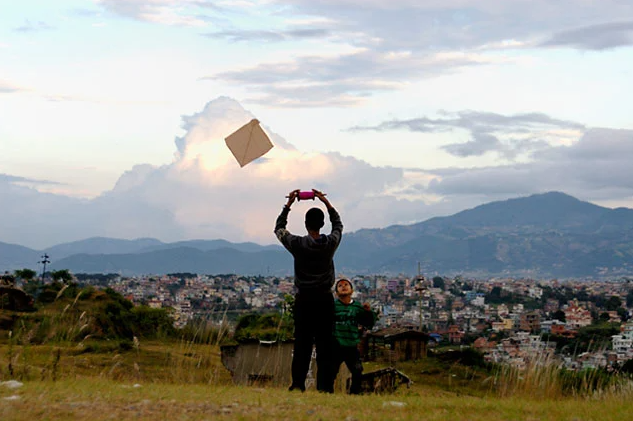
Bamboo Swings (Ping)
Even Dashain has another cherished tradition with the construction of bamboo swings, which are called ‘ping.’ These swings are set up in open spaces or community places and built the old fashion way with bamboo sticks and tough grass rope. There is the belief that one has to get up from the ground once per year by riding the swing of the Dashain festival.
Since centuries, bamboo swings were historically rooted in Nepalese culture and used at different festivals. Their connection to Hindu mythology, particularly the shape reminiscent of the Shiva Linga, adds a spiritual dimension to the activity. Swinging is considered to be a method of contacting divine powers and acquiring blessing of good health and wealth in the next year.
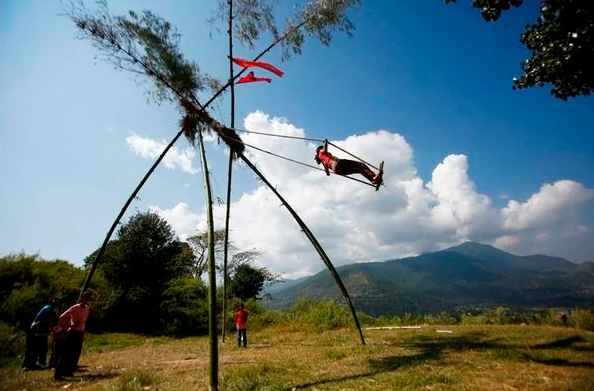
Card Games
Friendly gambling games are commonly illegal but are enjoyed during Dashain when families get together and play card games. During Dashain, children fly kites and the older family members play card games. These gatherings provide an opportunity for adults to socialize, reminisce about past experiences, and enjoy friendly competition.
Phases of Dashain
Each of the 15 days of Dashain has religious and cultural importance and certain rituals are performed to mark each day. The most auspicious days are Ghatasthapana (first day), Phulpati (the seventh day), Maha Ashtami (the eighth day), Maha Navami (the ninth day) and Vijaya Dashami (the tenth day) for everyone.
Dashain Festival Timeline (15 Days)
Ghatasthapana (Day 1): The festival starts with setting up the pot of holy water and barley seeds (commonly called as kalash).
Fulpati (Day 7): During the celebrations, sacred flowers and plants are brought to homes.
Maha Ashtami (Day 8): You would find that this is a significant ritual day which includes animal sacrifices to honor Goddess Durga.
Maha Navami (Day 9): A continuation of worship and offerings.
Vijaya Dashami (Day 10): It is the most important day the families come together for getting blessed with the Tika (a mix of yogurt, rice and vermilion).
Kojagrat Purnima (Final Day): Festival ends with final rituals and family visits.
What rituals are mostly carried out during Dashain?
Ghatasthapana: The First Day of Dashain
Ghatasthapana, which means ‘planting of sacred jar’ is considered the time for the beginning of the festival. Today, a pot (ghata) of holy water is placed into a prayer room, symbolizing the goddess Durga. It’s a sacred ritual that signals the start of the festival.
This ceremony is performed by the household’s most senior female member. Alongside the water jar, barley seeds are also planted in a sand filled pot. Jamara, the yellow-green barley shoots, grow from the seeds which are allowed to sprout and be used in rituals on the tenth day of Dashain, also known as Vijaya Dashami. Fertility, prosperity, and the blessing of the goddess are symbolized in these sprouts.
Ghatasthapana is the day on which prayers are recited, and from this day, worshipers would pay homage to the goddess Durga daily with such flowers, fruits and other items until the last day.
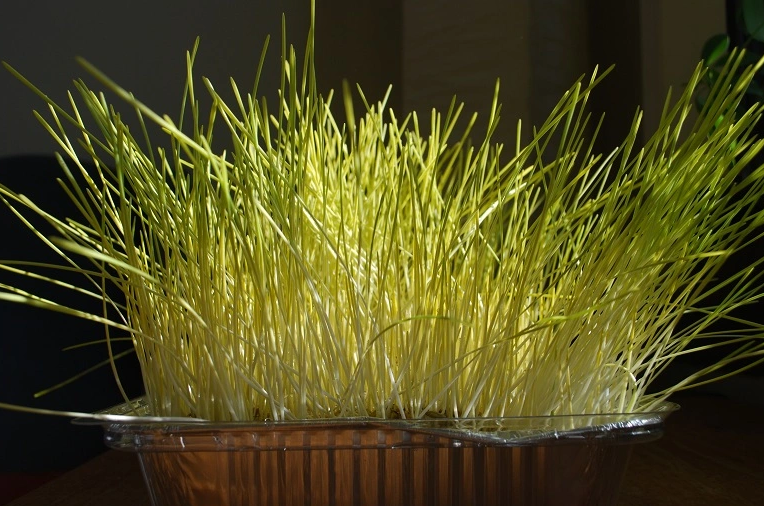
Phulpati: The Sacred Day
The seventh day of Dashain is Phulpati, and on this day, sacred flowers, leaves, and fruits are carried to specific temples, mainly in Kathmandu, and these flowers, leaves, and fruits are used in a ceremonial offering. The term Phulpati combines two words: phul (flower), which is part of the worship rituals, and pati (leaves).
The main event on this day is the grand Phulpati procession which starts from Gorkha district, all the way to the capital. This ceremonial march involves government officials, soldiers, and citizens. It’s a day of big celebration in the Kathmandu Valley, and families gather for feasts and other socializing.
Maha Ashtami and Sacrifice Rituals
The eighth day of Dashain, Maha Ashtami, is one of the most intense and revered days of all days. It is the day devoted to Kali, the fearsome form of Goddess Durga, being a form of destruction. Animal sacrifice rituals are important on this day.
As a tribute to the goddess, throughout Nepal goats, buffaloes, ducks, and other animals are sacrificed. The pure animal blood is considered appeasing to the goddess and she can protect them for a whole year. Although the practice of sacrifice is controversial, it is a tradition followed by many families and communities.
Family members unite together to make a meal with the sacrificed animals.
Maha Navami
Continuation of Worship: Like Maha Ashtami this day also demands more worship and sacrifices. It is also a day of honouring a tool or vehicle where people pray for protection from accidents in their daily lives.
Vijaya Dashami: The Main Day
On the tenth day, Vijay Dashami, Dashain is most important and highly anticipated day. This is the day on which goddess Durga defeated the demon Mahisha Asura, and as a symbol of this victory, family members receive Tika and Jamara from their elders.
Elders offer their blessings to the younger ones by putting Tika, a mixture of rice, yogurt, and red vermilion placed on the forehead of younger one for prosperity, health and success. The Jamara (barley sprouts) are put behind the ears or on the head. This symbolic act is a transfer of blessings passed from the older generation out to the younger, it strengthens familial bonds.
It is a joyous, laughing, reunion day, that family members who live far away come home to receive blessings from their elders. All this is completed with monetary gifts (Dakshina) that are also given to the younger generation by the elder one’s.
Tika and Jamara, a five day ritual began immediately after Vijayadashami when people visit extended family and friends while exchanging blessings and rejoicing their togetherness.
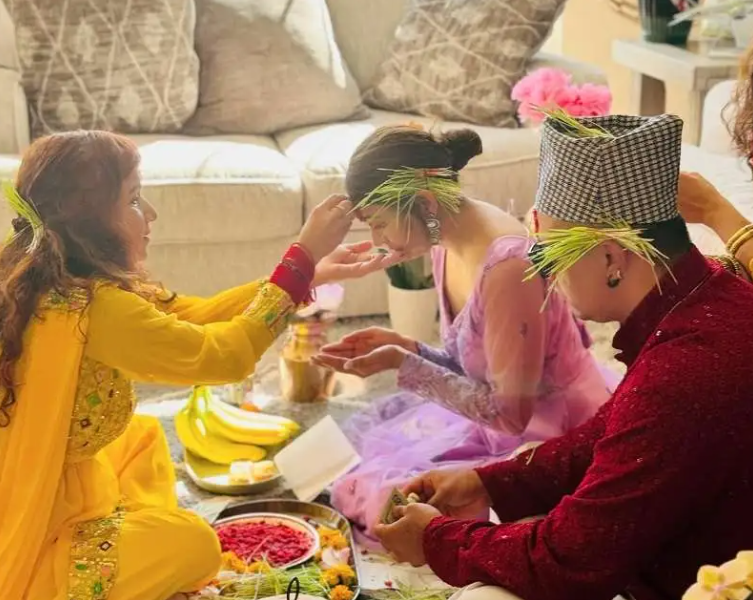
Final Day: Kojagrata Purnima
Worship of Goddess Laxmi: It ends on Kojagrata Purnima which is devoted to Goddess Laxmi and the worshipper seeks her blessings for wealth and prosperity. People believe that she made a home visit, this night.
Importance of Tika and Jamara in Dashain
The Dashain festival has great spiritual importance attached to Tika and Jamara.
On the occasion of Vijaya Dashami, members of the family get Tika, a paste of rice, yogurt and vermilion powder applied on forehead. This is not a formality, this is a way for elders to bless the happiness, prosperity, health onto the younger generation.
Red Tika will protect individual who is getting it, and it will be the divine blood of the goddess Durga. And this mark is believed to shield the man from unfavourable destiny and undesirable all over the year.
At the ceremony, present along Tika is also Jamara, the sprouted barley or maize. Jamara is personification of life, fertility, and prosperity. Its presence in the Tika ceremony enhances the blessings being conferred and signifies the growth and good fortune that families hope to cultivate in the coming year.
The tradition of using Tika stretches on even beyond Vijaya Dashami, and goes on till Kojagrat Purnima (fifteenth day), which permits long duration of family interaction and giving of blessings in the whole festival duration.
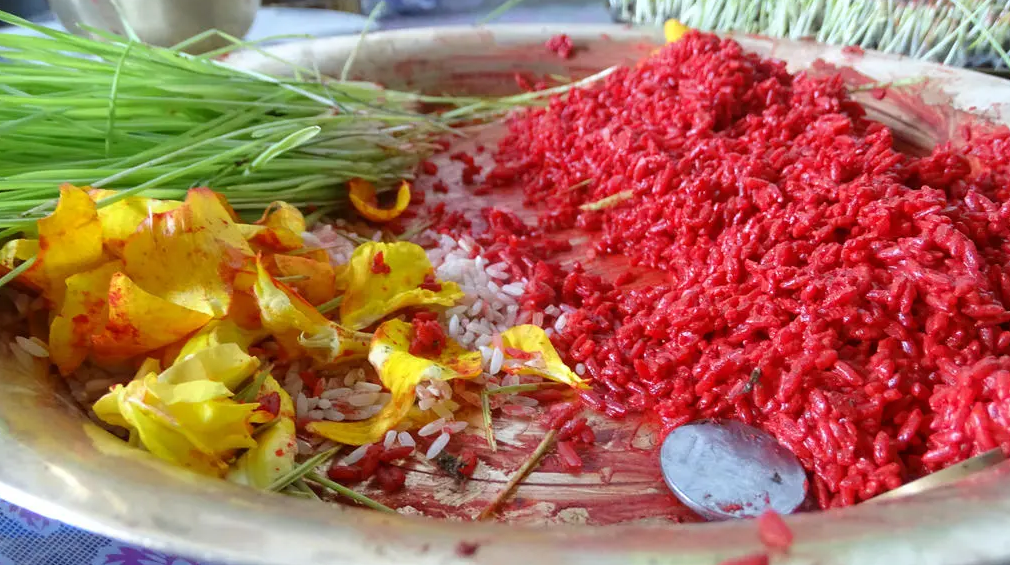
Dashain Celebrations Across Different Ethnic Groups
Nepal is a country of numerous ethnic groups, over 125 ethnic groups live in Nepal that each have their own cultural traditions, languages, and practices. Dashain is observed in a countrywide scale but the way such is observed is considerably different from one group to another.
While Dashain is about celebration with the family, each ethnic community enriches the festival with its own flavor as well as its own customs allowing the festival of Dashain to be somewhat different in region and culture. Though these variations exist, such themes as family, prosperity, and the besting of evil are still universally the same.
Dashain is deeply religious observance among the Brahmin and Chhetri communities. Central to the rituals are things like sowing barley seeds symbolizing prosperity on the day of Ghatasthapan, and daily prayers to goddess Durga. Through the Tika and Jamara ceremonies, these families receive blessings, and then there’s animal sacrifice that is followed by a lovely feast.
Instead, the Hinduism and Buddhism fusions seen in the Newar community (from the Kathmandu Valley) are blended in the celebration. Even if they worship to Goddess Durga, they also call the Newars worship including their own local deities and distinguishively feast on Choila and Yomari.
Dashain is different for the Tamang people who are mainly Buddhist, as it is not a time of religious devotion, but a time to honor ancestors. Tamang families start making altars for their ancestors, and combine Buddhist rituals with symbolic participation in Tika or Jamara ceremonies.
Dashain is the Nepalese harvest festival connected to the indigenous group of people called the Magar, where they observe Dashain with a deep rooted connection to the harvest season. The rituals that they do is that of giving thanks for agricultural abundance, and their celebrations are usually communal, with largescale gatherings of village people in feasting and dancing.
Dashain is a community celebration in the Terai region as well and the Tharu community also include nature centric celebrations like the Dashain. The animal sacrifices, communal feasts and honoring of local nature spirits are big parts of their observances.
The Sherpa community, although mainly Buddhist, immerses itself in the Dashain as a cultural event for renewing family bonds, ancestor worship and reunion.
While the rituals and the customs vary very much from group to group, Dashain brings them under one umbrella. By bringing together people from differing cultures, it helps to create a sense of community, through common values of family, renewal and celebration of life’s blessings.
Trekking in Nepal during Dashain
The trekking season in Nepal happens during Dashain and it is a unique and very enriching experience as you find it is a peak trekking season in October. It’s an exciting time when trekkers get the best weather and trail conditions alongside a vibrant festive vibe to Nepal.
Held in Nepal, dashain is the largest festival, and really adds something extraordinary to the experience of trekking. The country is alive with celebrations, and an excellent time to get a taste of it is by trekking, and being a part of it. Right now, the trails are filled with local and international trekkers, it’s lively and dynamic to explore Nepal’s world-renowned trekking routes.
But if you go trekking into the western parts of Nepal, like Annapurna Base Camp or Ghorepani Poon Hill, you’ll have the chance to enjoy Dashain the way the locals do. But not only because in these areas, there are great natural beauty but also their cultural richness. Dashain is celebrated by local communities often doing traditional celebrations such as the Tika ceremony where elders bless younger family members with Tika and Jamara (barley shoots).
Along with international trekkers, large numbers of domestic travelers also trek into the hills and mountains during Dashain. But for Nepalese trekkers it’s a perfect opportunity to combine their love for trekking with the festive season. So trail is lively and the trekkers of all the backgrounds attends in the festival and enjoy the beauty of Himalayas.
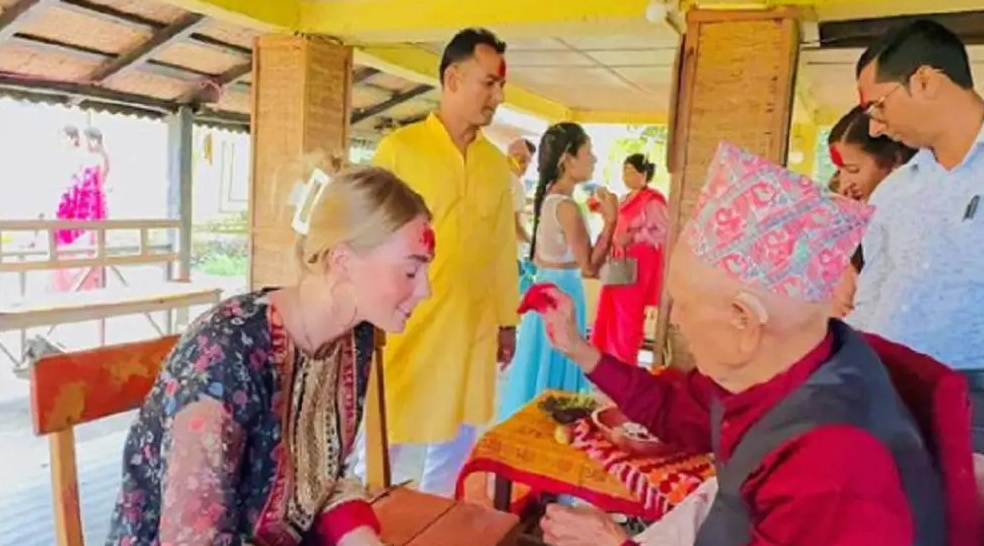
Conclusion
Dashain is about faith; it is about the celebration of one’s culture that observe every corner of Nepal, it is what brings people together as a family, having faith, and most of all it celebrates life. It is one of the longest public holidays of Nepal reminding people of cultural heritage and fostering its social harmony among people. Unlike festival in the western sense of the word, this one isn’t just about a community of spiritual belief, as much as they are about community and familial bonds that are critical to Nepali community.
FAQs
Can you guess on why Dashain is the biggest festival of Nepal?
Because it is a nationwide festival celebrated by millions of people with cultural importance and an extended fifteen days long and it is termed as the biggest festival of Nepal.
So what is the importance of Tika and Jamara in Dashain?
Goddess Durga’s blessings are represented by Tika and Jamara. They symbolize protection, prosperity, and a long life to those who receive it.
For how long is the Dashain festival gone through?
Dashain takes 15 days with each day having its importance, the major blooms on Vijaya Dashami, which is the 10th day.
What kinds of traditional food do we make during Dashain?
However, meat dishes like mutton and chicken, rice, lentils and various sweets and delicacies such as sel roti and rice pudding (kheer) are traditional foods.
What can Dashain do to foster family bonding?
Dashain is a time when there’s a lot of family bonding, performing rituals and thanking elders for blessing us, so what could be a better time for families to come together and have fun together.
